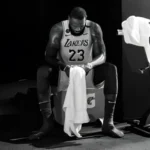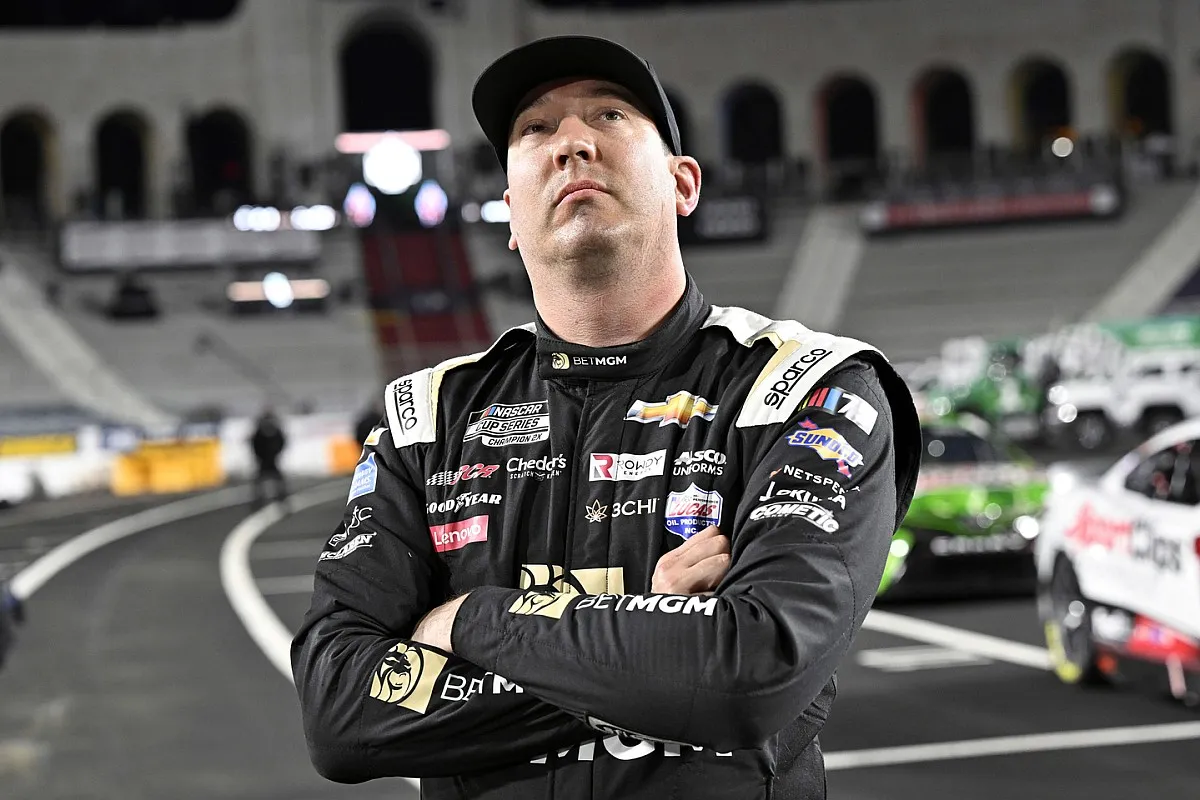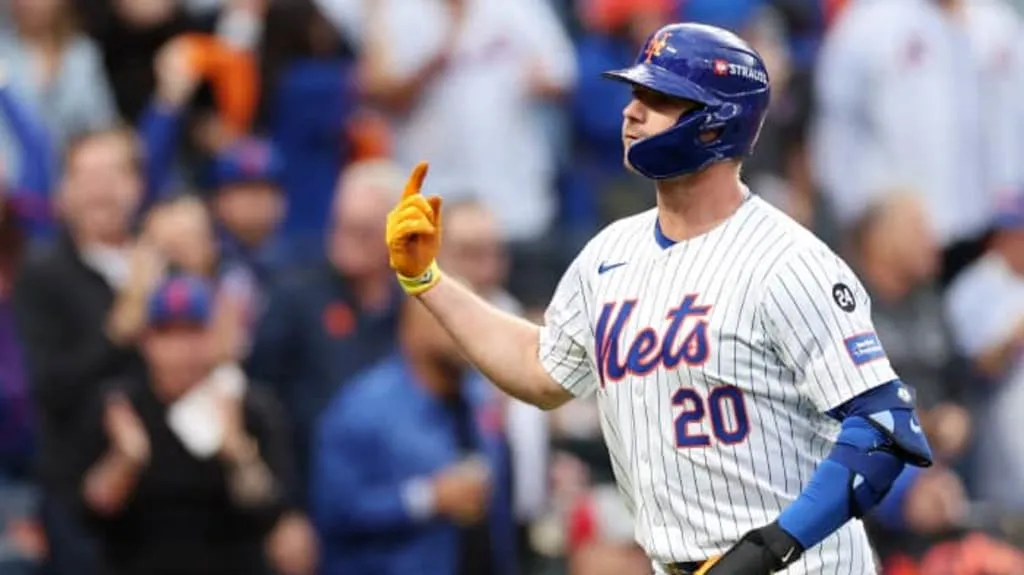
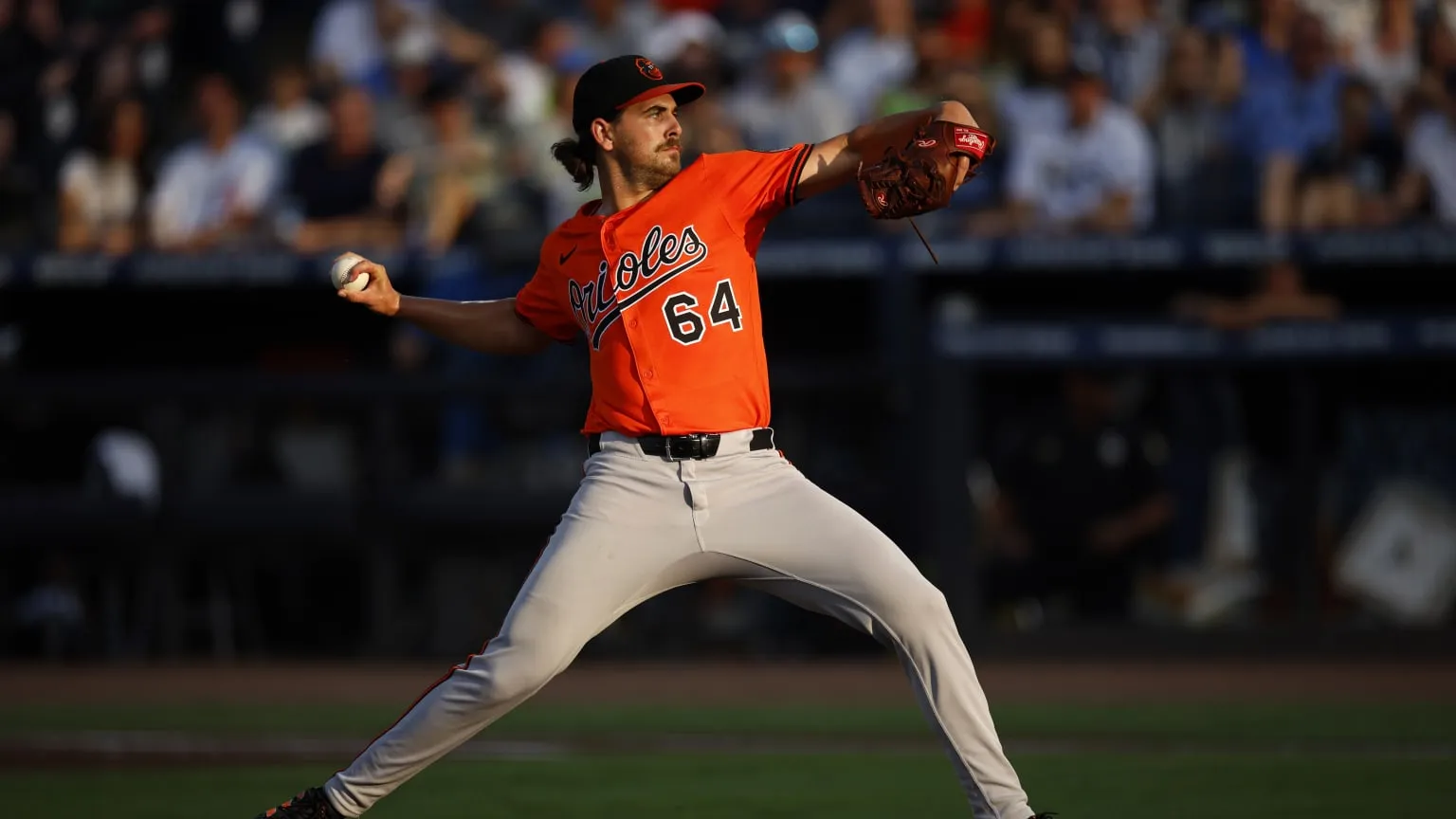
A rough start led to a mistake from a regular like Dean Kremer against the Houston Astros.
On the night of August 23rd, 2025, more than 30,000 fans packed into Camden Yards expecting another thrilling display from the Baltimore Orioles, a team that has spent much of the season battling to remain competitive in the tough AL East. Instead, what they got was a rollercoaster of emotions. In a dramatic back-and-forth game against the Houston Astros, the Orioles fell just short, losing 9–8 in one of the more heartbreaking defeats of the season. At the center of this chaos was Dean Kremer, a pitcher who has been both a symbol of resilience and inconsistency for Baltimore.
From the very first inning, Kremer found himself in trouble. Ambushed by the Astros’ bats, he allowed five runs in the opening frame, including home runs from Carlos Correa, Victor Caratini, and Jesús Sánchez. That early collapse created a massive hole for the Orioles to dig out of, and although Kremer eventually stabilized and fought through five innings, the damage had already been done. The night highlighted both his vulnerabilities and his ability to recover—two sides of Kremer that have followed him throughout his MLB career.
This article dives into what went wrong for Kremer in that pivotal matchup, why a small slip in mechanics set the tone for disaster, how he battled back after adversity, and what this performance means for his role in the Orioles’ future.
Dean Kremer: Setting the Stage
Dean Kremer is no stranger to pressure. As the first Israeli-American pitcher in MLB history, he has carried a unique cultural spotlight since debuting with the Orioles in 2020. Over the years, he has developed into one of Baltimore’s core rotation arms, blending a fastball-sinker mix with a sharp cutter and occasional off-speed pitches. While not always dominant, Kremer has consistently shown flashes of brilliance, giving Baltimore reliable innings in a rotation that has often been in flux.
Heading into the August 23rd matchup, Kremer’s season had been a tale of ups and downs. His ERA hovered in the mid-4s, respectable but volatile depending on the outing. Against weaker lineups, he has looked sharp and efficient. Against power-heavy lineups like Houston, however, Kremer has often needed to dig deep to survive.
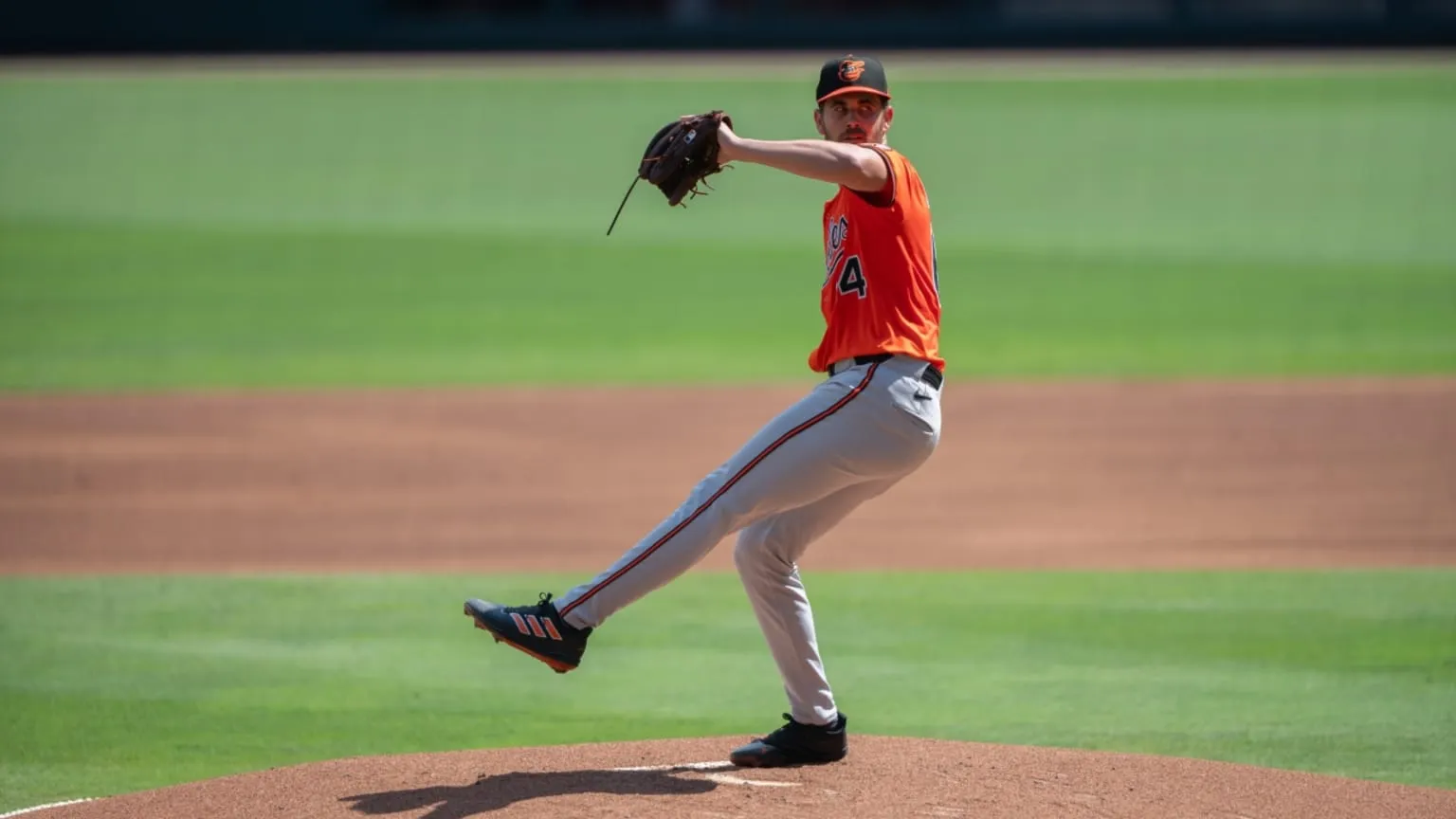
That context is important when evaluating his start against the Astros. Baltimore’s pitching depth had already been tested by injuries and the recent adoption of a six-man rotation, giving Kremer extra rest between starts. In theory, that rest should have put him in a stronger position to attack Houston’s lineup. Instead, the night unraveled quickly.
The Nightmare First Inning
The first inning at Camden Yards on August 23rd will likely be remembered as one of Kremer’s most disastrous starts to a game this season. His sinker, normally sitting at 92–93 mph, came in flat at 87 mph after what interim manager Tony Mansolino later explained was a slip during his delivery. That small loss in velocity was enough for Houston’s hitters to pounce.
First came Carlos Correa, launching a two-run homer that silenced the home crowd. Moments later, Victor Caratini followed with a two-run shot of his own, extending the Astros’ lead to 4–0 before many fans had even settled into their seats. The inning’s nightmare was capped by Jesús Sánchez, who hammered a solo blast to make it 5–0.
For Kremer, it wasn’t just a poor inning—it was the worst-case scenario for a pitcher known to rely heavily on early rhythm. Once hitters identified the dip in velocity, they sat back and waited for mistakes. And in MLB, especially against a lineup as disciplined as Houston’s, those mistakes are punished brutally.
Regaining Control
What separates Kremer from many pitchers, however, is his ability to adjust. After the disastrous first inning, he steadied himself, attacking the strike zone more aggressively and relying less on his diminished sinker. From the second inning onward, he showed glimpses of his usual form, limiting Houston’s damage and giving the Orioles a chance to claw their way back into the game.
Over the next four innings, Kremer allowed just two more runs. He leaned on his cutter and four-seam fastball to work around hitters who had already burned him once. While his final line—7 runs allowed (6 earned) on 7 hits over 5 innings—looks rough, the context paints a different picture. By surviving and chewing up innings, Kremer prevented Baltimore’s bullpen from being forced into emergency duty in the early innings.
For the Orioles, this resilience was crucial. The offense came alive in the second and third innings, with Ryan Mountcastle delivering a two-run single and the lineup capitalizing on Astros miscues to tie the game. Later, Jeremiah Jackson launched the first home run of his career in the fourth inning, while Colton Cowser drove in three runs to knot the score at 7–7. Without Kremer’s ability to keep the game within reach, that comeback would not have been possible.
The Decisive Blow
Unfortunately for Kremer and the Orioles, the Astros’ relentless offense did not let up. In the seventh inning, Christian Walker, already red-hot with three straight games of power hitting, delivered the dagger—a two-run home run that put Houston ahead for good. Baltimore’s offense, despite its fight, could not respond, and the Orioles fell 9–8, marking their third straight loss.
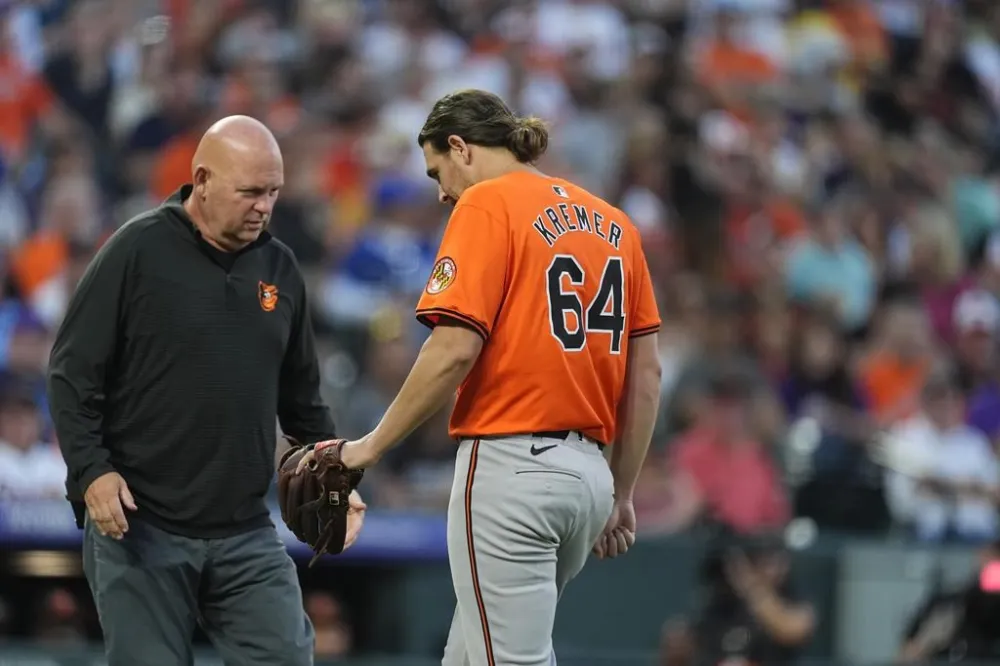
For Kremer, the box score told a harsh story. Allowing seven runs in five innings is rarely forgiven in MLB, especially when three of those runs came on home runs. Yet the larger narrative was more complex. His slip in the first inning set a disastrous tone, but his recovery showed grit. This duality is what makes Kremer such a fascinating pitcher to analyze: capable of collapsing early, but also tough enough to battle back and give his team a fighting chance.
What Went Wrong?
Kremer’s struggles against Houston can be traced to a few key factors:
-
Mechanical Slip: The loss of balance on the mound reduced his sinker velocity and effectiveness, leaving pitches flat and hittable.
-
Early Ambush: Houston’s hitters wasted no time punishing mistakes, building a lead before Kremer could find his rhythm.
-
Reliance on Secondary Pitches: Without his best fastball velocity, Kremer had to adjust mid-game, relying on cutters and breaking balls to survive.
This combination created the worst possible start to a game, and against a powerhouse lineup like Houston’s, recovery was always going to be uphill.
Lessons from the Outing
Despite the ugly first inning, there are positives to take away from Kremer’s performance. His ability to pitch through adversity and give Baltimore five innings is significant. In modern baseball, where pitchers are often yanked early after blowups, Kremer’s endurance helped preserve the bullpen for the rest of the series.
Additionally, the outing underscored how fragile pitching mechanics can be. A small slip—one that altered velocity by just a few miles per hour—completely changed the trajectory of the game. For Kremer, this is both a reminder and a teaching moment: consistency in mechanics is everything at the professional level.
Looking Ahead: What This Means for Kremer and the Orioles
The Orioles are at a critical point in their season. With a six-man rotation being implemented, there is pressure on every starter to maximize their outings. For Kremer, this latest start will likely raise questions about his reliability in big matchups.
However, there is also a silver lining. With the extra rest built into the rotation, Kremer has time to reset, refine his mechanics, and ensure his sinker velocity returns to its normal range. If he can avoid another disastrous first inning, his ability to eat innings and keep Baltimore competitive remains invaluable.
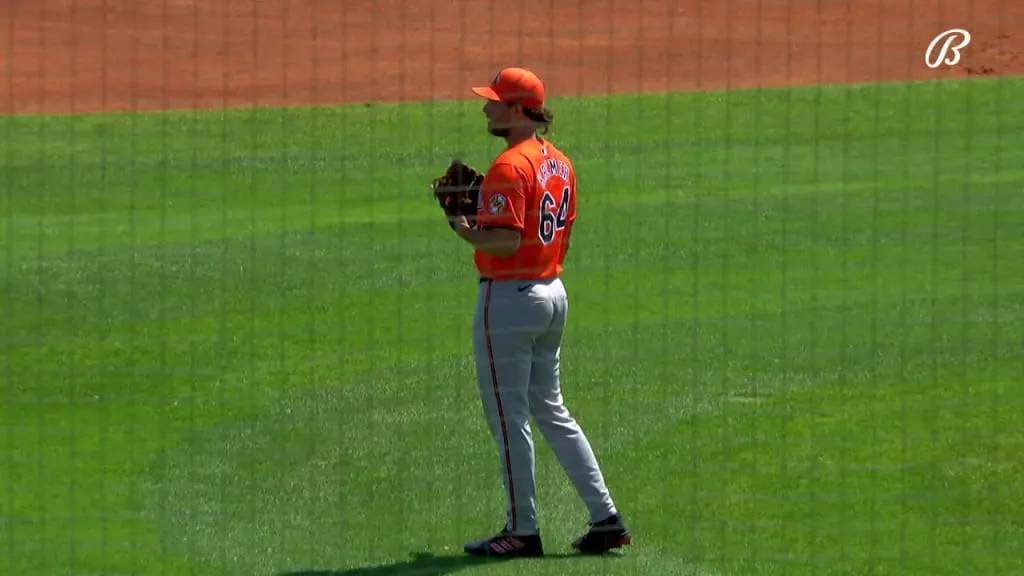
Long term, Kremer’s role is secure. He is too talented, too experienced, and too important to Baltimore’s pitching depth to be written off after one bad start. The bigger question is whether he can elevate his consistency to match his flashes of brilliance.
Conclusion
Dean Kremer’s outing against the Houston Astros on August 23rd was a microcosm of his career: moments of frustration, followed by resilience and grit. A nightmare first inning put the Orioles in a hole they couldn’t quite escape, but Kremer’s determination to stabilize and fight through five innings kept the game alive long enough for Baltimore’s offense to rally.
In the end, the loss was painful, but not without lessons. For Kremer, it was a reminder of how small mistakes in mechanics can snowball against elite hitters. For the Orioles, it was proof that their rotation needs both stability and flexibility as they push toward the postseason.
Whether remembered as a failure or a testament to resilience, Kremer’s start against Houston will linger as one of the defining moments of his 2025 campaign—a night when a slip of the foot changed everything, but his will to fight kept Baltimore’s hopes alive until the very end.






